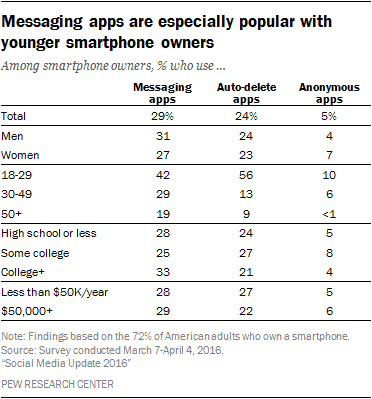
One of the difficulties with modern technology innovations is that they often require an understanding of previous technologies in order to be useful. To appreciate the power of search engines like Google, a user must have an understanding of the web and an appreciation for its potential. The pace of these technological iterations is fast and can be overwhelming to follow.
This iteration problem is particularly acute in the merging streams of journalism and social media. In the 20 years of online journalism, our tastes for producing and consuming news and information have been in flux. This has converged with the emergence of social media and its ability to visually connect our relationships and our interests into online and, now, mobile platforms.
When the Center’s parent organization, EdNC, launched Reach NC Voices, I must admit to being a little bit ho-hum. I respect my colleagues at EdNC and was confident that they were embarking on a worthwhile pursuit, but it did not pique my interest. In retrospect, I realize that my apathy was due to the fact that I had missed two technology iterations: I am not a regular social media consumer, and I use almost no messaging apps. As a result, I lacked the context to understand what their work was trying to accomplish.
Over the last month, I have learned more about Reach NC Voices and have grown excited about its possibilities for civic engagement and public policy. Reach NC Voices and a handful of other news entities and community engagement organizations are beginning to reshape how we interact in the public square. However, to understand the potential, I had to do some remedial work. As I have spoken to others about the initiative, I have realized that I am not alone in lacking some of the context to understand, apply, and use what Reach NC Voices can enable.
As a result, This week’s Insight is the first of a two-part effort. To understand the potential of Reach NC Voices, it is necessary to understand how journalism and civic engagement are evolving to use social media and messaging platforms and how artificial intelligence “bots” are shifting the landscape. Below, I have highlighted six points I found useful in understanding the context. Next week, I will dig into Reach NC Voices initiative and explore where it is going and how it can affect public policy in North Carolina.
1. Despite the hype, television is king
Amidst the hype around online news and social messaging, it is easy to miss that 57 percent of U.S. adults and nearly 75 percent of adults older than 50 get their news from television. Thirty-nine percent of adults and half of adults younger than 50 get their news online. This is important because is shows that while growing in influence, online sources are now the lead influencer.

2. The use of mobile devices to access news is growing
From 2013 to 2016, the number of people who “often” get their news on a mobile device has grown from 21 percent of adults to 36 percent of adults. With mobility comes the ability to get information in real time and to increase the expectations and pressures for newer and faster information.

3. People still interact about news in-person, not online
Eighty-five percent of adults who most commonly share news with others do so by word-of-mouth. In addition, younger adults are not more likely to engage with news on social media than older adults. This suggests that social messaging platforms are still more supplementary than they are core to our communication patterns and that these platforms have not or will not replace real-time interactions.

4. Within social media outlets, Facebook dominates news distribution
In a Pew Center report issued last November, 80 percent of online adults and 68 percent of all Americans use Facebook. Of those, 75 percent of Facebook users access the site daily.

Having grown up with print and broadcast media models, many of us identify the creators and distributors of content with the paper or the radio signal that distributes the content: The New York Times is physical paper on my porch and CBS is programmer for channel 17. As a result, I often find myself juxtaposing Facebook with traditional media outlets. In reality, Facebook is competing with paper and the radio waves, not the Wall Street Journal.
5. Messaging Apps are having an increasing influence
The report also delivered information about messaging apps, which are evolving to be an increasing stakeholder in the information communication space, especially among Americans younger than 30.
 The Tow Center for Digital Journalism has written about the rise messaging and chat apps in its 2015 A Guide to Chat Apps. Here are several highlights from the report:
The Tow Center for Digital Journalism has written about the rise messaging and chat apps in its 2015 A Guide to Chat Apps. Here are several highlights from the report:
-
Messaging apps offer strong opportunities to engage new or difficult-to-reach demographics. For example, Snapchat, a very popular app among millennials, has been credited with engaging and informing young audiences on complex issues like the Iran nuclear deal.
-
Messaging apps enable news outlets to gather (potentially exclusive) user-generated content and can become a major source during breaking news situations (e.g., as in the BBC’s coverage of the second Nepal earthquake in 2015).
-
Messaging apps can provide unique opportunities for giving audiences direct access to content and publishers, be it through tailor-made WeChat platforms (Cliff Central) or Public Chats on Viber (The Huffington Post).
-
Messaging apps not only facilitate communication with eyewitnesses in areas where other forms of communication are not functioning (e.g., during extreme weather conditions), they can also provide a platform for people who don’t feel safe speaking on the telephone. Additionally, apps such as Telegram focus strongly on encryption and security.
-
When sourcing user-generated content, apps like WhatsApp, which are tied to a user’s phone number, can significantly speed up the verification process as they provide a direct line to the content creator/eyewitness.
6. Within messaging apps, “bots” are a growing feature
Bots are a growing feature in information and technology. Siri, Cortana and other virtual assistant programs are bots. According to a report by CNBC, a bot is simply a software program designed to automate tasks. “The increasingly common form of bots, chatbots, simulate conversation. They often live inside messaging apps–or are at least designed to look that way–and it should feel like you’re chatting back and forth with a human.”
The News Literacy Program at New York University has a useful description of the different types of bots that are used in different applications.
The chatbot function of Reach NC Voices is core to its model and to the opportunity. Here are two additional resources about the impact of these software programs:
A bridge to next week
One of the most interesting aspects of these social media and messaging app evolutions is they way that they allow for real time, two-way communication. Any user of Facebook is familiar with the ubiquitous surveys that let users determine which character from Game of Thrones they most resemble. There is potential in the ability to use that same mechanism to engage in a new public square. Next week, I will explore what that looks like. In the meantime, experience it first-hand by participating in this poll by Reach NC Voices.
Weekly Insight Explainer Reach NC Voices

